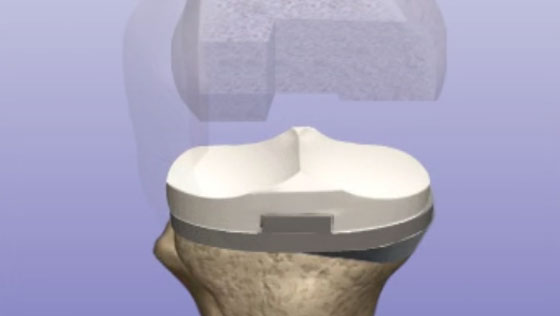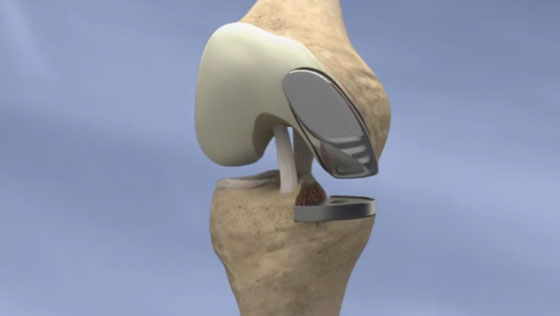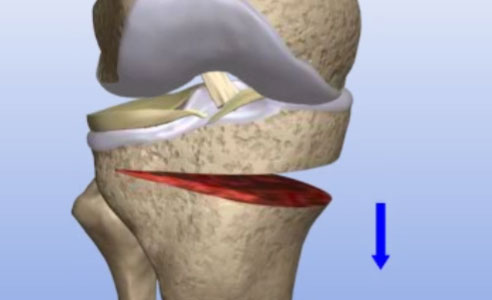What is Total Knee Replacement?
Total knee replacement (also known as TKR, total knee arthroplasty, or TKA) is a surgical procedure performed to replace damaged portions of the knee with an artificial implant.
Key statistics about Total Knee Replacement
- Nearly 800,000 knee replacement surgeries are performed each year in the United States[1]
- On average, TKR patients are 67 years old[2]
- Approximately 62% of TKR procedures are performed on women[2]
- Between 80-85% of knee replacements will last for 25 years[3]
- More than 90% of patients who undergo TKR surgery experience a dramatic reduction of knee pain[4]
Expert Insights
Should I wait to have a Total Knee Replacement? - Kurt Kitziger, MD
Why is Total Knee Replacement Performed?
Total knee replacement is performed primarily to relieve pain and stiffness caused by arthritis. Arthritis occurs as the cartilage that cushions the knee wears down, causing the bones to grind against each other. This results in pain and inflammation, and can lead to bone deformity and a loss of joint mobility.
When the cartilage damage from arthritis is so severe that all cartilage must be removed, a total knee replacement is performed. If the cartilage damage is limited to a specific region of the knee, a partial knee replacement may be performed.
Knee Anatomy
The knee joint is formed by three bones: the femur (thigh bone), the tibia (shin bone), and the patella (kneecap).
Menisci are pieces of cartilage found between the femur and tibia, while articular cartilage covers the ends of the bones. Together they work to absorb shock and reduce friction as the knee moves.

Who needs Total Knee Replacement?
Nearly half of adults in the United States will develop arthritis in at least one knee during their lifetime.
Arthritis may be the result of normal wear and tear due to aging (osteoarthritis), or may be caused by a knee injury (post-traumatic arthritis) or autoimmune disorder (rheumatoid arthritis).

How is Total Knee Replacement performed?
- Your surgeon will make an incision and access the knee joint.
- The damaged portions of the femur and tibia are removed.
- Your surgeon will insert the femoral and tibial implants into the bone. It also may be necessary to remove the damaged underside of the patella and replace it with an artificial implant.
- Finally, the incision will be closed with sutures or surgical staples.

What are the risks of Total Knee Replacement?
It is uncommon to experience complications from TKR, but potential risks may include:
- Infection
- Blood clots
- Nerve or blood vessel damage
- Loosening or wearing down of the implant over time
How long does it take to recover from Total Knee Replacement?
- 24 hours after surgery Physical therapy will begin. It is common for blood thinners and pain killers to be prescribed. Compression stockings may be provided to prevent blood clots.
-
1-3 days after surgery
Most patients are discharged from the hospital and will be able to walk with crutches, a cane, or walker. -
2 weeks after surgery
Any non-dissolvable sutures and staples are removed and bruising and swelling begin to subside. -
3-6 weeks after surgery
Most patients are able to return to work and resume driving and most daily activity. -
4-6 months after surgery
Most patients are fully recovered from TKR.
What are the results of Total Knee Replacement?
TKR improves knee mobility and quality of life for a wide variety of patients, and the surgery has a high degree of patient satisfaction. More than 90% of patients who undergo TKR experience a dramatic reduction of knee pain[4] and 80-85% of knee replacements will last 25 years[3]. In younger patients, this may mean the need for a revision knee replacement to reaffix or replace the implant components.
Find an Orthopedic Doctor in Your Area





